As the semester winds down here at Maria College, students are engaged in all sorts of activities to measure what they have learned in their courses. Although traditional exams and research papers are still valuable measures, a lot of students are creating presentations with text, images, and even videos to demonstrate their learning.
The wonderful students in the Humanities II course that I had the joy to teach this semester created presentations based on the following criteria: Determine “the most significant and vital of human accomplishments” in the following six areas:
- Music
- Philosophy/Religion
- Art (painting, sculpture, architecture)
- Literature
- Science
- Historical event
Students had to choose just one accomplishment in each area over the expanse of the past 600 years since our work during the semester focused on the Renaissance to the present day. And, of course, they had to provide at least two reasons why they made each choice! Well, they rose to the challenge, and I wanted to share some of their choices with you.
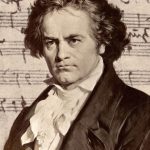 Music: Beethoven was the frontrunner with several students focusing on his musical accomplishments, some of which were created after Beethoven had gone deaf which really amazed all of us. Check out this flash mob we shared in class of Beethoven’s “Ode to Joy” from his Ninth Symphony.
Music: Beethoven was the frontrunner with several students focusing on his musical accomplishments, some of which were created after Beethoven had gone deaf which really amazed all of us. Check out this flash mob we shared in class of Beethoven’s “Ode to Joy” from his Ninth Symphony.
However, some more recent musicians found a place in other students’ presentations. Michael Jackson (especially his work Thriller) and John Williams (known for composing the music for films such as Jaws and Star Wars) were on the list along with a special shout-out from one student for Jimmy Hendrix.
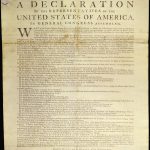 Philosophy/Religion: There was quite a range of choices here from the Renaissance philosophy of humanism to Machiavelli’s description of a leader in his 1513 work The Prince to John Locke’s understanding of the equality and independence of all people which influenced the United States’ Founding Fathers in creating the Declaration of Independence.
Philosophy/Religion: There was quite a range of choices here from the Renaissance philosophy of humanism to Machiavelli’s description of a leader in his 1513 work The Prince to John Locke’s understanding of the equality and independence of all people which influenced the United States’ Founding Fathers in creating the Declaration of Independence.
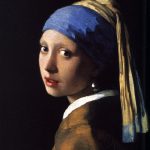 Art: The two Italian Renaissance artists—Michelangelo and Leonardo da Vinci—understandably captivated many students, especially in terms of the Sistine Chapel and the Mona Lisa. Here is a fascinating way to tour the Sistine Chapel.
Art: The two Italian Renaissance artists—Michelangelo and Leonardo da Vinci—understandably captivated many students, especially in terms of the Sistine Chapel and the Mona Lisa. Here is a fascinating way to tour the Sistine Chapel.
But Brunelleschi’s dome in Florence, Italy, caught the attention of one student while Vermeer’s Girl with a Pearl Earring and the modern work of Andy Warhol intrigued others. I think one student learned of an artist whom she now admires—Peter Paul Rubens and his Baroque paintings of voluptuous women that she feels portray real women rather than some photo-shopped modern-day fashion model!
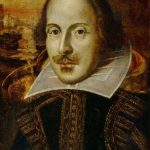 Literature: William Shakespeare certainly has earned his stripes according to several students who found themselves amazed as we explored the ways in which Shakespeare molded language into rhyme patterns and figures of speech in his sonnets. Additionally, the quiet but powerful poetry of Emily Dickinson, the fascinating visions of heaven and hell from Dante’s Divine Comedy, and the temptation of Eve from John Milton’s Paradise Lost were favorites of other students.
Literature: William Shakespeare certainly has earned his stripes according to several students who found themselves amazed as we explored the ways in which Shakespeare molded language into rhyme patterns and figures of speech in his sonnets. Additionally, the quiet but powerful poetry of Emily Dickinson, the fascinating visions of heaven and hell from Dante’s Divine Comedy, and the temptation of Eve from John Milton’s Paradise Lost were favorites of other students.
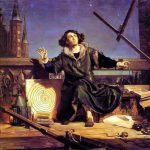 Science: Students were especially captivated by the significant contributions of those who went outside conventional wisdom to make new discoveries in the area of science. Copernicus and Galileo, both of whom suffered consequences, dared to state that the sun was the center of the universe and prove that with a mighty telescope. And the present-day impacts still evident from the discoveries of Louis Pasteur in terms of bacteria and Isaac Newton in terms of laws of physics made an impact on other students.
Science: Students were especially captivated by the significant contributions of those who went outside conventional wisdom to make new discoveries in the area of science. Copernicus and Galileo, both of whom suffered consequences, dared to state that the sun was the center of the universe and prove that with a mighty telescope. And the present-day impacts still evident from the discoveries of Louis Pasteur in terms of bacteria and Isaac Newton in terms of laws of physics made an impact on other students.
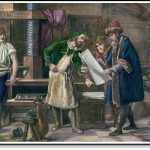 Historical Event: In this area, students really felt the challenge of choosing just one event that they thought to be the most significant over the past 600 years, but they eventually made some strong choices. Gutenberg’s invention of the printing press with movable type topped several students’ lists due to the dramatic impact of more easily accessible and affordable reading materials which affected all people, especially those who had previously been denied access to books with the knowledge that they held and empowerment that they brought.
Historical Event: In this area, students really felt the challenge of choosing just one event that they thought to be the most significant over the past 600 years, but they eventually made some strong choices. Gutenberg’s invention of the printing press with movable type topped several students’ lists due to the dramatic impact of more easily accessible and affordable reading materials which affected all people, especially those who had previously been denied access to books with the knowledge that they held and empowerment that they brought.
This empowerment contributed to another historical event that several students chose: Martin Luther and the Protestant Reformation which forever changed the face of the European religious landscape. Students saw great significance in the fact that Martin Luther translated the Bible from Latin so that others could read the Bible for themselves and that people now had readier access to the Bible due to the printing press!
Other events, however, were also singled out by students: the Age of Enlightenment, the Scientific Revolution, and the Industrial Revolution (which illustrated to many the dual nature of human experience: the great benefits that came from industry in terms of material goods and the sad outcome of child labor and pollution).
I congratulate all the students from Humanities II and the thoughtful work they did on their presentations. And I wish them all an enjoyable and relaxing summer filled with music, art, and literature!
Until next time . . .
Anne
Images:
Beethoven
Declaration
Girl with a Pearl Earing
Shakespeare
Copernicus
Printing Press
